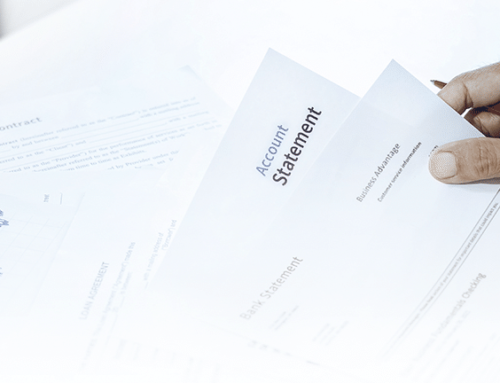We’re here to break down the 2021 Federal Budget . We’ll explain what it all means including who benefits the most from this year’s budget, and who loses.
The budget outlines how the government is going to be spending money in the upcoming financial year. In the wake of COVID-19 and Australia’s first recession in 29 years, this budget is arguably more important than ever before.
This year’s budget has billions of dollars going in all different directions, containing tax cuts, support for home buyers and homeowners, job training programs for young people, aged care funding, measures to support women, among many other things.
Winners:
1. Prospective home buyers

Prospective home buyers have been given a boost with the introduction of the Family Home Guarantee, as well as an extension to the New Home Guarantee and an increase in the maximum amount of super allowed to be released under the First Home Super Saver Scheme.
The Family Home Guarantee allows 10,000 single parents with dependent children to buy a home with a deposit as little as 2%. The guarantee is not limited to first home buyers, meaning single parents who have previously bought a home are eligible.
Introduced last year, the New Home Guarantee has had 10,000 places added, meaning more first home buyers can buy a newly built home or build a new home with a deposit as little as 5%.
There’s also been an increase in the amount of super that can be withdrawn to assist in getting a home loan deposit together as part of the First Home Super Saver Scheme, with eligible first home buyers now able to access up to $50,000 of voluntary super contributions. They cannot access super contributions made by their employer or spouse.
Lastly, the HomeBuilder scheme, while not taking new applications, has had its construction commencement time increased from 6 to 18 months after the contract date.
Get a free property report in seconds
Search an address for price estimates and sales history.
2. Existing homeowners
Existing homeowners will also benefit from the construction commencement extension placed on the HomeBuilder scheme. The scheme was designed to boost the construction industry while providing financial assistance in the form of $25,000 grants to those wanting to build new homes and those wanting to do major renovations on their existing home. While only applicable to existing applicants, those eligible will have an additional 12 months to get started on their construction project.
Additionally, the downsizer scheme age has been lowered from 65 to 60. This means that those aged 60 and above are able to make a one-off, post-tax $300,000 (or $600,000 for couples) contribution to their superannuation after selling their home.
Those eligible for the Pension Loans Scheme (PLS) will benefit from the soon to be introduced No Negative Equity Guarantee that will mean borrowers under the scheme won’t owe more than the market value of their property.
Along with most low and middle income Australians, homeowners may benefit from income tax cuts. These savings could be put towards their home loan, purchasing an investment property, renovations, or just put into savings.
Thinking of renovating your property?
Find a great cash out rate in seconds.
3. Aged care
The government will provide an extra $17.7 billion in funding for aged care over the next five years. While this is more than what is currently provided, it is important to note that the royal commission into aged care recommended that the sector was underfunded by around $10 billion a year.
This money will go to things like new home care packages, increasing the amount of time spent caring for each aged care resident, workforce training and respite care.
4. Women
Women are set to benefit from a number of budgetary measures, including the $354 million that is going into women’s health. The areas targeted include cervical and breast cancer screening programs, depression services for pregnant women and new mothers, Indigenous maternal healthcare, eating disorders, and other areas such as endometriosis pain management programs.
Further funds are being allocated towards domestic and family violence reduction and survivor support. This includes a trial program set to give women fleeing from violent relationships up to $5,000 in assistance.
The superannuation guarantee will be extended to include employees earning less than $450 a month, most of whom are women. And, given that 81% of single parents are women, women will benefit from the Family Home Guarantee program.
5. Child care and preschool
A further $1.7 billion will be injected into the childcare industry over the next three years, with over half a billion dollars per year going towards changes to the Childcare Subsidy Scheme. The $10,560 cap on households with an annual income above $189,390 is set to be abolished. The subsidy for one child in childcare is staying at 65%, and 95% for those with two or more children in childcare.
6. Mental health
The National Mental Health and Suicide Prevention Plan will receive a further $2.3 billion, divided between five areas. Funds will go towards early intervention, suicide prevention and aftercare, mental health treatment and treatment for vulnerable Australians (particularly Indigenous people).
Additionally, over $200 million is being put towards increasing the size of the mental health workforce by creating scholarships and clinical placements for psychologists, nurses and other allied health practitioners working in the sector. A National Suicide Prevention Office will also be established.
7. Vaccines and COVID prevention measures
Unsurprisingly, the budget has dedicated $1.9 billion on developing our vaccine strategy in coming years. An extra $1.5 billion will be put towards contact tracing, testing and other COVID-related services.
8. Tax payers
The tax rebate introduced last year for low and middle income earners is set to continue on for the next 12 months. Those eligible will enjoy a little extra cash in their pockets to put towards savings, investments or whatever they feel like.
| Wage | Offset |
|---|---|
| $37,000 or less | $225 |
| $37,001 to $48,000 | $255 plus 7.5 cents for every $1 above $37,000 (up to a max of $1,080) |
| $48,001 to $90,000 | $1,080 |
| $90,001 to $126,000 | $1,080 minus 3 cents for every $1 of the amount above $90,000 |
9. Farmers

Farmers weren’t overlooked in the 2021 federal budget, with a number of measures aiming to alleviate economic pressure on the industry. They will be eligible for the instant asset write-off and $200 million has been allocated for a National Soil Strategy providing rebates to farmers who share the results of soil testing.
Funds will also go towards biosecurity measures and trialling ways to reduce emissions. Nearly $15 million of debt will be waived from over 5,000 farmers receiving the Farm Household Allowance.
10. Businesses
The business write-off perks from last year will be extended by an additional 12 months. So, businesses that have a turnover of up to $5 billion will be able to write off the total value of eligible assets (e.g. work equipment) purchased between the last budget and 30 June 2023. Losses incurred up to this date can also be offset against profits made dating back to the 2018 to 2019 financial year.
Also announced was support for particular industries like gaming, small brewers, medical and biotech startups.
Losers:
1. Universities
Tough border restrictions have placed limits on the number of international students enrolling at Australian universities. International students, who pay heftier fees than local students, have long been relied upon to generate a good portion of university revenue. The budget does not include any specific funding for universities.
The lack of international students has also disrupted the rental property sector. 2020 saw high vacancy rates and low rents in many central areas that were previously popular with international students.
Get free expert advice on your home loan
Choose a time for one of our Home Loan Specialists to call you.
2. Renewable energy
This year’s budget doesn’t include funding for renewables, other than $30 million directed towards a battery and microgrid project in the Northern Territory. Instead, there is a focus on low emissions technologies, including hydrogen production hubs, and carbon capture and storage projects (CCS).
3. International tourism
The pandemic has created an unpredictable atmosphere surrounding the tourism industry. Complications with the vaccine roll-out, international outbreaks and a very cautious government means that borders may not open until mid-2022 at the earliest.
For tourism operators who rely on overseas visitors, this isn’t great news. Financial support in the budget for this sector is very limited.
4. New residents
The government will be saving money by placing lengthy wait times of four years on most welfare payments for newly arrived residents. It is estimated that this cut will save about $671 million over the next five years.
5. Migration
Border closures have led to a drop in migration. This has already created a number of issues, including a labour shortage in the hospitality and agricultural sectors. Young people on working holidays visas in Australia have tended to make up a large proportion of fruit pickers.
Fewer migrants arriving could create issues for property investors. Many migrants rent throughout their time in Australia and a lack of demand means that investors could be forced to lower rents and deal with vacant properties. On the plus side, renters could find a good rental deal in the meantime.
Neutral:
1. Property investors
There were no changes announced to negative gearing or capital gains tax (CGT). This isn’t a shock, with an upcoming election influencing the government away from making controversial changes. Property investors will still benefit from tax cuts if they fall into the eligible income thresholds.
2. Young people
JobTrainer will help upskill young people in areas like childcare, trades, IT and aged care. However, the scheme won’t be that useful for young people who aren’t interested in these areas. The government has shown favour towards funding education and training for more vocational areas, as emphasised by changes to tertiary education tuition fees that were introduced this year.
This year’s federal budget covers a lot of ground. If you’re thinking about making some changes to your financial situation in preparation for the next financial year, consider starting with your home loan. With interest rates at all-time lows and a fast moving property market, now could be the time to think about a refinance, purchase or sale.









Leave A Comment